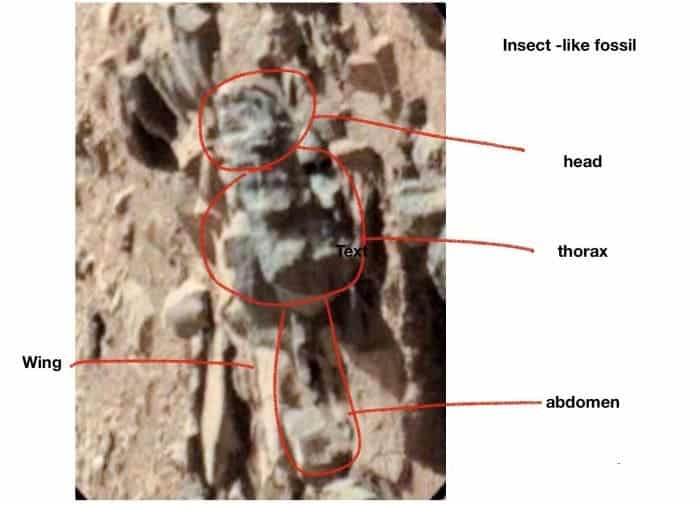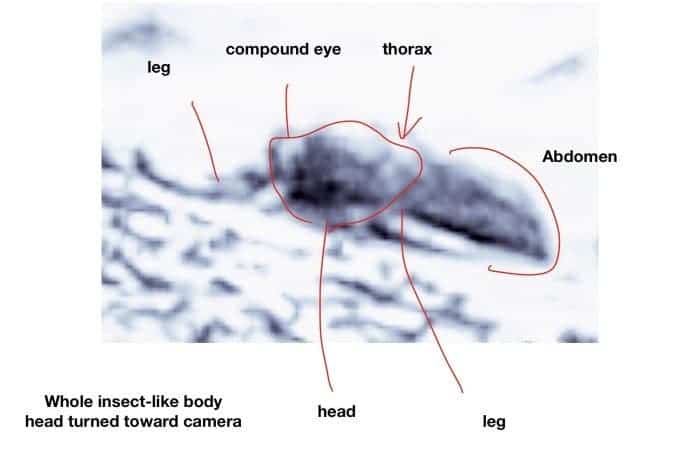An entomologist says photos taken by the Curiosity rover depict bugs. His critics say he has pareidolia.

The claim
William Romoser, an entomologist and a professor at Ohio University, presented a research poster at a conference in St Louis and said he has evidence of current life on Mars. The said there are “insect-like” and “reptile-like” forms on the planet, which he claimed has a “surprising abundance of higher life forms.”
Romoser spent a few years studying photos from Mars he obtained online. He claimed to have found on them several examples of insect-like forms with a structure similar to bees as well as reptile-like forms including fossils and living organisms.
“There has been and still is life on Mars,” Romoser said. “There is apparent diversity among the Martian insect-like fauna which display many features similar to Terran insects that are interpreted as advanced groups – for example, the presence of wings, wing flexion, agile gliding/flight, and variously structured leg elements.”
The researcher said the photos show images of arthropod body segments as well as legs, antennae, and wings. He claimed to have carefully studied the photos and not to have removed or added content to them, having variated photographic parameters such as contrast and saturation.
“Once a clear image of a given form was identified and described, it was useful in facilitating recognition of other less clear, but none-the-less valid, images of the same basic form,” Romoser said. “An exoskeleton and jointed appendages are sufficient to establish identification as an arthropod.”

The proof
That’s it — you’re basically seeing it above. Romoser’s claims are based on the images and the images alone.
Great claims require great proof, and this really isn’t great proof — that’s putting it lightly.
The research was widely questioned in social media and the academic world. Amanda Kooser, CNET writer, said Romoser suffers from pareidolia, a human tendency to see recognizable shapes in random patterns – something commonly found among alien enthusiasts.
Romoser dedicated most of his academic life to studying insects, so he could be seeing insects where there are none. He also has a history of bold (and quite fringe) claims regarding Mars. He published two past reporters where he claimed to have found evidence of intelligent life forms on the red planet.
Even this is putting it lightly: Twitter had a field day with Romoser’s claims.
Romoser is an accomplished entomologist — but if he wants people to take these claims more seriously, substantially more evidence is required.
However, it should be said that he presented the claims at the Entomology conference — and conferences are exactly where preliminary results should be presented. It remains to be seen whether these Martian bugs will pass the test of serious scientific screening — but I wouldn’t bet on it.






